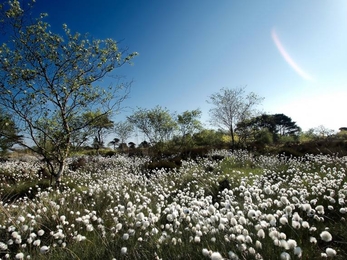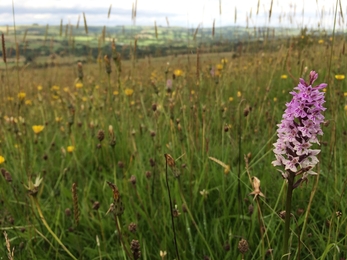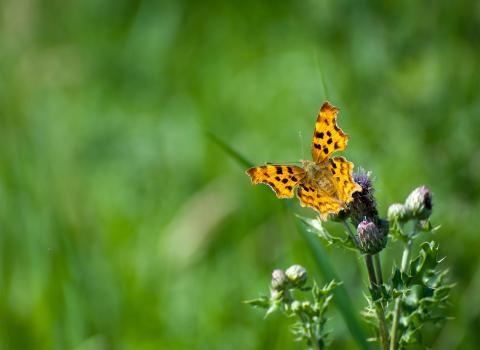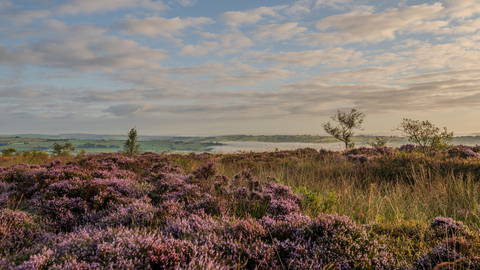
Black heath at Ipstones Edge - by Sarah Davison
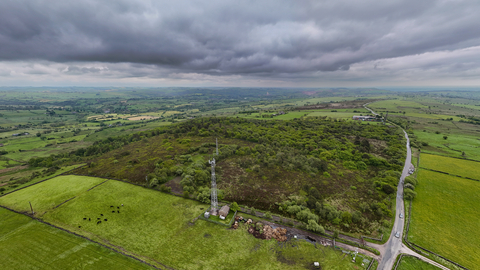
Swineholes Wood from above by Gary Waterhouse
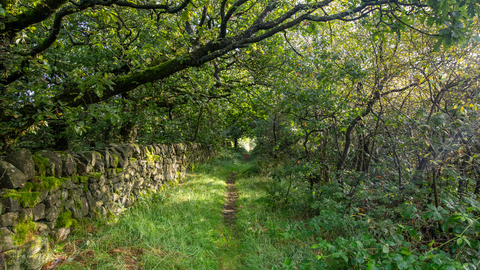
Swineholes stunted oak woodland - by Sarah Davison
Ipstones Edge
Know before you go
Dogs
Please keep your dog on a lead, especially between April and July when many birds are nesting on the ground.
When to visit
Opening times
Open at all timesBest time to visit
Early summer for heather and late summer for rare plants like LousewortAbout the reserve
Highlights
- The special heathland habitats at Swineholes Wood and Black Heath undoubtedly look at their best in late summer when the hillside is covered in swathes of purple heather.
- Casey Bank is a botanist's paradise! Early summer is the best times to look for rare plants like lousewort, moonwort and bog asphodel.
- The stunted oak woodland is worth a walk at any time of the year – look for the tall tussocks of bilberry growing in areas where the canopy allows enough sunlight to reach the ground.
Upland Moor or Lowland Heathland?
Black Heath and Swineholes Wood are two of the largest remaining fragments of heathland which would have historically clothed much of the ridge. Located at the south-west tip of the Pennines the sites' unique locations mean that they represent a transition between the lowland heathlands of south Staffordshire and the larger expanses of upland moorland to the north. Most of our moorlands don’t support a particularly diverse range of plants - but the plants and animals that do live in these habitats are special and worth protection. The sites' importance is recognised in the designation of the moorland areas as a Site of Special Scientific Interest (SSSI).
Trying not to lose our balance
Key to managing the heathland areas is maintaining a balance between the rarer heathland habitat and the woodland. Our work with volunteers focuses on three main habitats:
- Preventing the loss of good heathland areas and ensuring that those areas which have become recently (within the last 40 years or so) encroached by woodland are returned and maintained as heathland.
- Managing parts of the woodland where there is characteristic stunted oak woodland but the ground layer still supports heathland shrubs, like bilberry. We try to keep the best of both worlds here by thinning the woodland to provide light, but still retaining tree cover for woodland birds.
- Managing the more mature woodland by occasional thinning. This ensures new trees can find light and space to regenerate for future generations.
- Key to maintaining this balance is the hard work from our volunteer teams and the invaluable help of a small herd of cattle!
Don’t leave home without your wellies or waterproof boots
Head along the road to Casey Bank and you’d be well advised to wear your wellies. Casey Bank was rescued from agricultural improvement in 1999 when the Trust acquired the land. Previous farming methods have ensured that this site retains a diverse range of plants, including several which are uncommon.
The best bits are the boggy bits! If you don’t mind getting your feet wet you’ll be rewarded with plants like bog asphodel, cranberry, common spotted orchids, marsh violets, marsh valerian, ragged robin and water forget-me-not. The drier areas in between the wet flushes support plants like lousewort, moonwort, adder's tongue fern, tormentil and bilberry.
Connecting the landscape for wildlife
Historic maps from the 1700’s would show Ipstones Edge as being covered in heathland almost all along the ridge, an area known as Little Morridge. Changes in land use over many generations has resulted in only a few areas of wildlife rich habitats remaining. The Trust has been fortunate enough to be able to secure the management of the largest fragments.
What was once a 60 acre nature reserve now covers over 160 acres – expanding nature reserves like this, and working with surrounding land owners to fill in the gaps is one of the ways the Trust is helping to ensure a more connected landscape for nature, valued by people today and sustainable for future generations.

